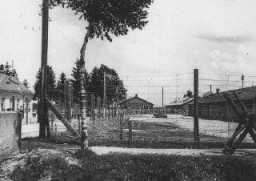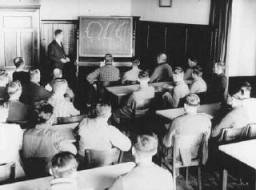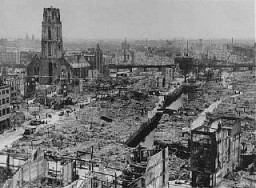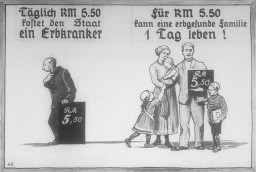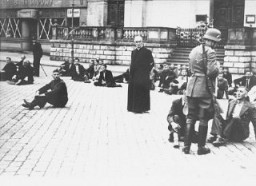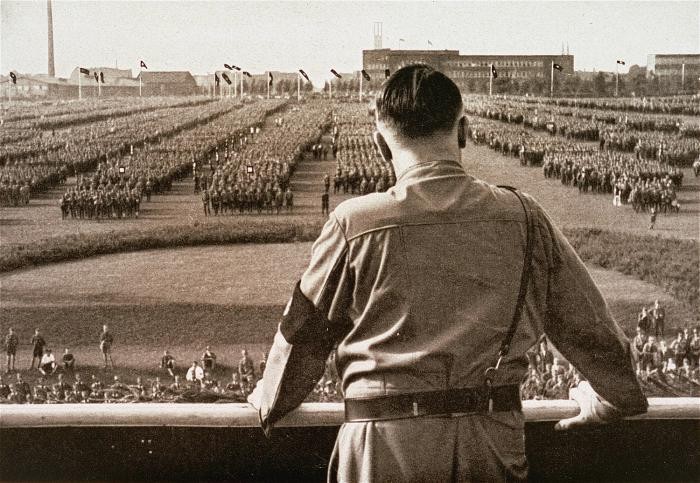
The Nazi Terror Begins
The Nazi Terror Begins After Adolf Hitler became chancellor of Germany in January 1933, he moved quickly to turn Germany into a one-party dictatorship and to organize the police power necessary to enforce Nazi policies. He persuaded his Cabinet to declare a state of emergency and end individual freedoms, including freedom of press, speech, and assembly. Individuals lost the right to privacy, which meant that officials could read people's mail, listen in on telephone conversations, and search private homes without a warrant.
Hitler also relied on terror to achieve his goals. Lured by the wages, a feeling of comradeship, and the striking uniforms, tens of thousands of young jobless men put on the brown shirts and high leather boots of the Nazi Storm Troopers (Sturmabteilungen). Called the SA, these auxiliary policemen took to the streets to beat up and kill some opponents of the Nazi regime. Mere fear of the SA pressured into silence other Germans who did not support the Nazis.
Key Dates
March 31, 1933
Nazi governors appointed to govern German states
Adolf Hitler replaces elected officials in state governments with Nazi appointees. One of the first steps in establishing centralized Nazi control in Germany is the elimination of state governments. Hermann Goering, a leading Nazi, becomes minister-president of Prussia, the largest German state. By 1935, state administrations are transferred to the central government in Berlin.
May 2, 1933
Nazis seize control of trade unions
Storm Troopers (SA) and police occupy the offices of trade unions. Trade union officials and activists are terrorized. The trade unions' records are impounded and their assets seized. The unions are forcibly merged with the Nazi organization, the German Labor Front. Independent labor representation is thus abolished.
July 14, 1933
Nazi Party becomes the state party
All political parties except the Nazi Party are dissolved. The Nazi Party is the only political party permitted in Germany, a situation that will last until the military defeat of Germany in 1945. Germany thus becomes a one-party dictatorship. Membership in the party increases to 2.5 million in 1935, and ultimately to 8.5 million by 1945.
July 20, 1933
Adolf Hitler signs concordat (agreement) with the Catholic Church
A treaty between the German government and the Vatican (the highest authority in the Roman Catholic church) guarantees Catholics the freedom of private religious practice, but dissolves Catholic political and trade union organizations. The Vatican (which had the status of a sovereign state) was the first state to recognize formally the legitimacy of Adolf Hitler's government. Despite the treaty, the Nazis continue to persecute Catholic religious and cultural organizations, priests, and schools.



